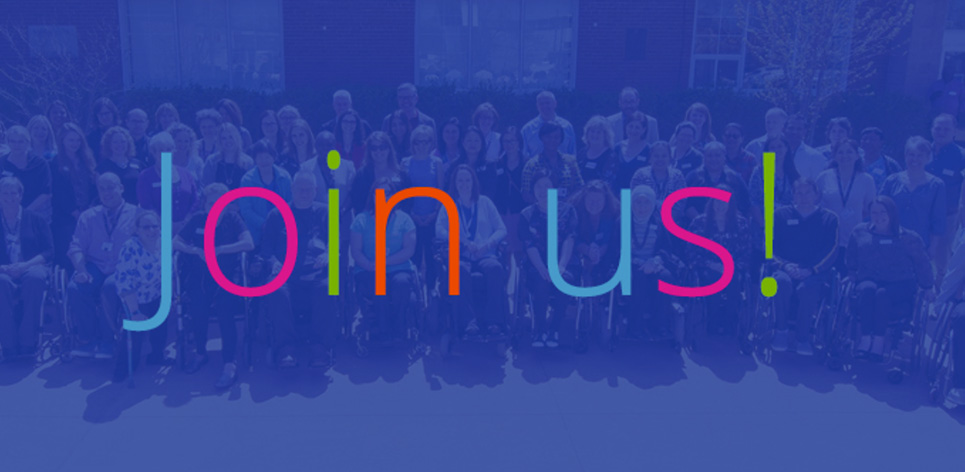Accessibility Plan
April 2022 – March 2027
Background to plan
In June 2005, the Ontario government passed the Accessibility for Ontarians with Disabilities Act (AODA), with the goal to make Ontario accessible to people with disabilities and remove all barriers by 2025.
In 2008, the Accessibility Standard for Customer Service became law. SCIO’s commitment to ensure accessible customer service is reflected in our Customer Service Standard Handbook which was released in January 2012.
In 2011, the Integrated Accessibility Standards Regulation (IASR) became law. This regulation includes accessibility standards for information and communications, employment and transportation and the built environment. Each of these standards have specific requirements and staggered compliance deadlines.
One of the requirements of the Integrated Accessibility Standards Regulation (IASR) is the development of a multi-year accessibility plan to identify, address and prevent barriers for individuals with disabilities from using the services, programs and/or working at SCIO.
Statement of SCIO’s Commitment
SCIO is committed to provide its services in a way that respects the dignity, independence, integration, inclusion and equal opportunity of people with disabilities. SCIO is committed to meeting all needs in a timely manner and to identifying, removing, and preventing barriers that reduce the ability of individuals with disabilities to full access; increasing awareness of accessibility initiatives; and promoting legislative compliance. SCIO will provide accessibility and accommodation for individuals with disabilities through the Accessibility for Ontarians with Disabilities Act (AODA)’s Customer Service Standard, Integrated Accessibility Standard Regulation and all other standards as they are developed and that are in accordance with the requirements of the Ontario Human Rights Code.
SCIO’s Accessibility Plan is divided into two sections. Section 1 of the plan addresses requirements under the AODA legislation. Section 2 identifies accessibility barriers and solutions based on input from clients, employees and other stakeholders via annual surveys and other mechanisms made available for input.
SCIO’s Accessibility Plan addresses accessibility issues at our service locations, providing our services in the community and the community at large as it impacts our clients. This multi-year accessibility plan also outlines the policies, procedures and actions that SCIO will put in place to improve opportunities for people with disabilities.
Types of Accessibility Barriers
SCIO’s Accessibility Plan (section two) addresses eight categories of barriers which include and are defined as follows:
Architectural
Any physical design or structural factor that makes accessibility difficult. Examples could include lack of ramps or ramps that are not accessible, lack of accessible parking, narrow doorways/elevators, or Braille for individuals who have a visual disability.
Environmental
A characteristic of a work or service setting that compromises or impedes the ability to provide service or receive the benefits of service delivery. Examples of this could include lack of privacy which compromises confidentiality, a service location where staff or clients are exposed to fragrances, excessive noise, or harsh lighting.
Attitudinal
A preconceived attitude (usually negative) that people have towards individuals with disabilities. This may include such things as using disrespectful language, promoting dependence vs. independence or not seeking input of individuals with disabilities.
Financial
Anything that may mean a service is restricted because of lack of sufficient financial resources. This type of barrier could be systemic issues such as insufficient funds for a particular program that result in a wait list, or lack of funded transportation to get to a service appointment. Financial barriers may exist at an organizational level or may be specific to funds possessed by persons served.
Employment
Systems, policies and procedures that place employees with disabilities at a disadvantage in obtaining, maintaining or advancing in their job. Examples could include lack of access to job accommodation (e.g. adaptive technology, attendant services in the work place, flexible work hours). This may also include barriers to recruitment and/or career advancements for individuals with a disability.
Communication
Factors that prevent SCIO information from being accessible and understandable to all clients, employees, volunteers, stakeholders and public. Examples may include lack of accessible formats (e.g. large print), lack of access to interpreters, lack of non-verbal communication tools, and limitations in website accessibility, a user unfriendly web interface or not using plain language in communications etc.
Transportation
Factors that contribute to an individual’s inability to access a service location or being unable to fully participate in services as a direct result of non-accessible transportation.
Community Integration
This could include any barrier to an individual with a disability that prevents access to full participation in the community of their choice. Examples could include barriers to employment, schooling, volunteering and/or leisure activities which they have expressed as a goal in their service with SCIO.
Identification of barriers
SCIO seeks input from clients and employees via targeted questions on annual satisfaction surveys and has a mechanism for ongoing input from the public and other stakeholders through an email address: accessibility@sciontario.org, published on the website. The data collected from all of these sources is analyzed and considered in the annual review of the SCIO Accessibility Plan and updated as required.
Review of Accessibility Plan
SCIO’s Accessibility Plan will be reviewed annually and updated as required based on new information, with updates occurring no less than every 5 years. The current updated plan covers the 5 year period from 2022 – 2027.
Communication of Accessibility Plan
SCIO’s Accessibility Plan will be posted on the organization’s website and staff intranet. Alternative formats will be made available upon request. If you have any questions about the plan, please contact us by email at accessibility@sciontario.org; or by mail to Accessibility – SCIO, 520 Sutherland Drive, Toronto ON M4G 3V9.
AODA Legislative Requirements
SCIO undertook an accessibility survey to update and renew the accessibility plan for the next 5 years. This plan will be reviewed and updated on an annual basis.
Customer Service Policies, Procedures and Training of Employees
- SCIO has developed a Customer Service Handbook & incorporated the handbook into SCIO Standard Policy and Procedure formats.
- Developed E-Learning training module on Customer Service for all staff.
- Compliance reports are filed annually.
Emergency Response Information
- Emergency Response Plan (ERP) and Manual was developed and tools to obtain accommodation requirements of employees with disabilities in the event of an emergency.
- Mandatory training occurs on an annual basis. Information from employees is updated on an annual basis.
Accessibility Policy
- Established an Accessibility Policy that governs SCIO’s overall approach to meeting the Integrated Accessibility Standards Regulation (IASR) standards, under AODA requirements.
- The plan was completed in 2014, was reviewed in March 2021, and is reviewed and updated annually and posted on the intranet and website.
Accessibility Plan
- Developed a SCIO multi-year Accessibility Plan and post on the website and intranet.
- Reviewed and updated March 2022.
AODA Training
- We provide training to all staff and volunteers on the rights and obligations under the IASR and the Human Rights Code (as it pertains to people with disabilities). Maintain training records.
- Training continues to be part of new hire orientations. Training continues to be available to all staff through e-learning platform.
- Evaluate training once completed and incorporate appropriate feedback.
Accessible Formats & Communications Support and Website
- SCIO has updated the website to be compliant with AODA standards with the exception of externally provided contents as resource material.
- Print Marketing and communication materials are in PDF format and can be made into accessible PDFs on request.
- Videos are captioned, internally and externally.
Recruitment Processes
- All job postings have an equal opportunity statement encouraging individuals with disabilities to apply.
- At the time of scheduling interviews, candidates are asked if they require accommodations for the interview process and suitable arrangements are made.
- Accommodation needs are identified at time of or just following offer of employment and suitable arrangements are made.
Accommodation Process & Plan for Employees
- We have an Accommodation Policy and continue to provide education to managers and employees on our accommodation process.
Return to Work, Performance Management, Career Development Policies
- Policy reviewed annually and amended as required. Updated in March 2021.
- These policies have all been updated to address AODA requirements.

